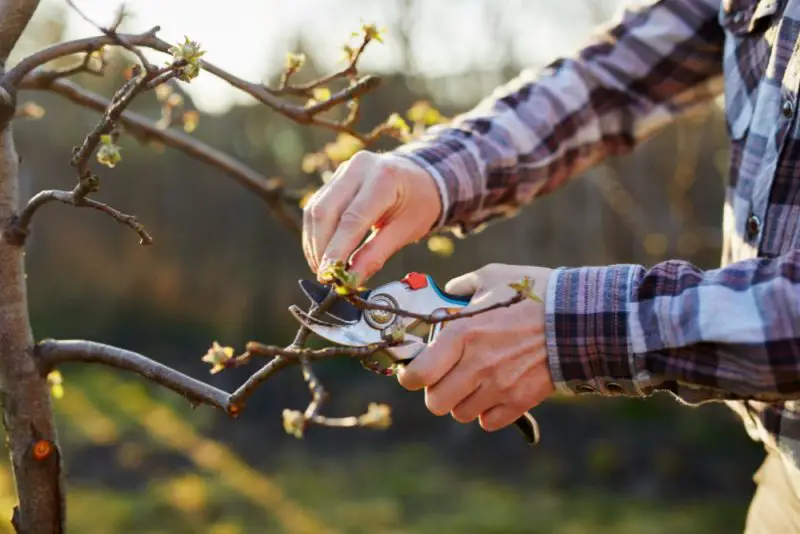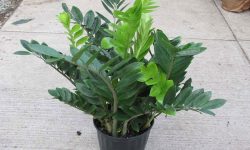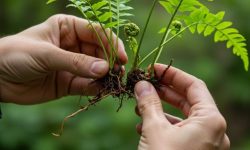Dogwood trees are prized for their delicate spring blossoms and vibrant fall foliage, making them a favorite in gardens and landscapes. Proper pruning is essential to maintain tree health, encourage strong growth, and maximize flowering potential. Incorrect timing or techniques can reduce blooms and compromise the tree’s overall structure, so understanding the right approach is crucial for gardeners seeking beautiful, long-lasting displays.
Pruning not only enhances flowers but also improves air circulation, removes dead or damaged branches, and strengthens the tree’s form. By aligning pruning schedules with seasonal growth cycles, gardeners can ensure dogwoods remain resilient, attractive, and capable of producing abundant blooms each year. This guide offers expert advice for timing, techniques, and care strategies to help your dogwoods thrive.
Understanding Dogwood Growth and Blooming Cycles

Dogwood trees follow distinct growth and blooming cycles that influence when pruning should occur. Typically, these trees produce flower buds on previous year’s growth, meaning pruning at the wrong time can remove next season’s blooms. Understanding the timing of leaf development, bud formation, and flowering is essential to preserve the tree’s ornamental value. Early spring marks the start of active growth, while late winter is generally considered safe for structural pruning before new growth begins.
During the blooming cycle, dogwoods develop buds in late summer to early fall for flowers that appear the following spring. These buds are delicate and can be easily damaged if pruning occurs too late in winter or during the flowering period. Additionally, dogwoods naturally shed old or weak branches, which helps maintain a healthy canopy. By observing the tree’s growth patterns, gardeners can identify which branches require removal and which should remain to support strong blooms and overall vitality.
Environmental factors also impact growth and flowering cycles. Temperature fluctuations, late frosts, and drought stress can delay bud development or reduce flower quality. Soil fertility, sunlight, and moisture availability further influence how vigorously a dogwood grows and blooms. By combining knowledge of growth cycles with attention to local environmental conditions, gardeners can make informed pruning decisions that maximize flower production, enhance tree health, and ensure a consistent, visually striking display each season.
Best Time of Year to Prune Dogwood Trees
The optimal time to prune dogwood trees is late winter to early spring, just before new growth begins. Pruning during this period allows the tree to recover quickly while minimizing the risk of removing flower buds. Removing dead, diseased, or crowded branches during dormancy improves air circulation and sunlight penetration, supporting healthy development and abundant blooms in the coming season. This timing also reduces the likelihood of stress from frost or environmental extremes, which can occur if pruning is done too early or too late.
Avoid pruning dogwoods during peak flowering or late spring, as this can remove developing buds and shorten the blooming period. Summer pruning should be limited to correcting minor structural issues or removing damaged limbs. Timing is especially important for varieties that bloom on previous year’s growth, as improper pruning can significantly reduce next season’s flower display. Observing local climate patterns and the tree’s growth cycle helps gardeners determine the safest and most effective time to prune.
Seasonal conditions, such as frost risk and temperature fluctuations, further influence pruning success. In northern regions, pruning may need to be delayed slightly to avoid frost damage, while southern areas may allow earlier pruning. By understanding both the tree’s biological cycle and environmental factors, gardeners can plan pruning schedules that maximize flowering potential, maintain structural health, and ensure dogwoods remain resilient and visually stunning throughout the year.
Tools and Equipment for Pruning Dogwoods
Essential Pruning Tools
Having the right tools is critical for safe and effective dogwood pruning. Sharp hand pruners are ideal for small branches and precise cuts, while loppers allow gardeners to reach thicker limbs without straining. Pruning saws are necessary for large or stubborn branches that cannot be removed with hand tools. Using clean, well-maintained tools prevents tearing of branches, reduces stress on the tree, and minimizes the risk of disease transmission.
Proper tool selection also enhances accuracy and efficiency. For delicate or flowering branches, bypass pruners are preferred because they make clean cuts without crushing tissue. Gardeners should regularly sharpen blades and disinfect tools between cuts, especially when removing diseased branches. Investing in ergonomic tools reduces fatigue during longer pruning sessions and ensures consistent results across the tree, preserving both tree health and flower quality.
Safety and Additional Equipment
Safety is equally important when pruning dogwoods. Gloves protect hands from thorns, splinters, and rough bark, while safety glasses shield eyes from debris during cutting. For taller trees, ladders or telescopic pruning poles allow access to upper branches safely without causing unnecessary strain or damage. Ensuring a stable working environment prevents accidents and enables precise pruning.
Additional equipment such as mulch, pruning sealant, or tree supports can aid in tree recovery after heavy pruning. Mulch protects roots and retains soil moisture, while supports stabilize young or heavily pruned trees. Using the right combination of tools and safety measures not only makes pruning easier but also promotes tree health, structural integrity, and long-lasting blooms for dogwoods in any landscape.
Pruning Techniques for Healthy Growth
Pruning dogwood trees requires both timing and technique to encourage healthy growth. Begin by removing any dead, damaged, or crossing branches to improve air circulation and light penetration. This practice reduces the risk of fungal infections and ensures the tree directs energy toward healthy branches and flower production. Cutting back competing shoots near the base also helps maintain a strong central structure.
Shaping is another key technique for healthy dogwoods. Lightly thinning out crowded areas prevents branches from rubbing together, which can create wounds and invite pests. When shaping, avoid removing more than one-third of the tree at once, as excessive pruning may weaken the plant and delay blooming. Always make clean cuts just above a bud or branch collar to promote quick healing and strong regrowth.
Rejuvenation pruning can be useful for older dogwoods that have lost vigor. This involves selectively removing older branches to encourage the development of fresh, flowering growth. Regular but moderate pruning sessions every year are more effective than heavy, infrequent cuts. By combining structural pruning, shaping, and renewal techniques, gardeners can maintain vibrant, healthy dogwood trees that produce abundant flowers and remain resilient against environmental stress.
Seasonal Timing for Pruning Dogwoods
Pruning in Late Winter to Early Spring
Late winter to early spring is often considered the best time to prune dogwoods. During this period, the tree is still dormant, which reduces stress and minimizes sap loss. Removing dead or crossing branches before new growth begins allows the tree to focus energy on developing healthy shoots and blossoms. It also provides a clear view of the tree’s structure, making it easier to make accurate cuts without the distraction of dense foliage.
Pruning before buds fully open ensures that the dogwood’s natural flowering cycle remains undisturbed. By addressing structural issues early, gardeners can prevent disease spread and improve air circulation ahead of the growing season. This careful timing results in stronger branches, better blooms, and a healthier tree overall. Gardeners should avoid heavy pruning too close to blooming season, as it can reduce the number of flowers produced that year.
Pruning After Flowering
Pruning after flowering is another suitable option, especially for homeowners who wish to enjoy a full display of blooms before cutting. Once the petals fall, branches can be shaped or thinned without sacrificing the tree’s seasonal beauty. This timing is also effective for controlling size and encouraging balanced growth throughout summer. Removing faded flower clusters prevents energy waste and directs nutrients toward developing stronger limbs and foliage.
Summer pruning must be done carefully to avoid over-stressing the tree. Gardeners should focus on light trimming rather than heavy cuts, ensuring the dogwood retains enough leaves for photosynthesis. Pruning during this season can also help manage pests, as removing damaged or infected branches reduces the spread of problems. When performed thoughtfully, post-flowering pruning maintains the dogwood’s vigor, structure, and readiness for the following year’s bloom.
Common Mistakes to Avoid When Pruning Dogwoods
Over-Pruning and Heavy Cuts
One of the most common mistakes when pruning dogwoods is removing too much at once. Taking off more than one-third of the canopy can place severe stress on the tree, weakening its ability to photosynthesize and recover. Over-pruning often leads to reduced flowering in the following season, as the tree has fewer branches to support buds. Heavy cuts also expose large sections of wood, increasing the risk of disease or pest invasion. Careful, moderate pruning over several years is always more effective than drastic cuts in a single season.
Another issue with over-pruning is that it disrupts the natural shape of the dogwood. These trees have a graceful, layered structure that becomes distorted if too many branches are removed. Instead of cutting back heavily, gardeners should focus on selective trimming, addressing only the branches that are dead, damaged, or crossing. Maintaining the tree’s form while improving its health ensures a balance between beauty and function, allowing the dogwood to flourish without unnecessary stress.
Improper Cutting Techniques
Improper cutting methods can also harm dogwoods, even if pruning is done at the right time. Cutting too close to the trunk or leaving long stubs prevents proper healing and may invite fungal infections. Clean cuts made just above a bud or branch collar encourage quick recovery and reduce the risk of decay. Using dull or dirty tools can cause jagged wounds, spreading disease and slowing regrowth. Regularly sharpening and disinfecting tools ensures each cut supports the tree’s long-term health.
Another common mistake is topping the tree, which involves cutting back the upper branches indiscriminately. This weakens the structure, encourages weak new shoots, and ruins the natural form. Instead, shaping should focus on gentle thinning and guiding growth. Avoiding harsh techniques protects the dogwood’s natural beauty while encouraging steady, healthy development. By practicing careful, precise pruning, gardeners can maintain both the health and elegance of their dogwoods season after season.
Pest and Disease Prevention for Pruned Dogwoods
Preventing Insect Infestations
Fresh pruning cuts can attract insects if not managed properly. Dogwoods are vulnerable to pests like dogwood borers, scale insects, and aphids, which weaken branches and reduce flower production. Pruning at the correct season helps minimize attraction, as insects are less active during late winter and early spring. Gardeners should also ensure tools are disinfected to prevent carrying pests from one branch to another. Maintaining healthy soil and proper watering strengthens the tree’s natural defenses, making it less appealing to insects.
Monitoring the tree after pruning is crucial. Early detection of holes in bark, sticky residue, or wilting leaves can signal an infestation. Removing infested branches quickly and applying organic treatments such as neem oil can stop problems from spreading. Encouraging natural predators like ladybugs and birds adds another layer of protection. When combined with clean pruning practices, these steps reduce pest risks and help dogwoods remain strong and vibrant.
Preventing Fungal and Bacterial Diseases
Diseases such as powdery mildew, anthracnose, and leaf spot often affect dogwoods, especially if air circulation is poor. Pruning plays a critical role in reducing these risks by thinning dense growth and allowing sunlight to reach inner branches. However, improper cuts or pruning during wet conditions can introduce fungal spores directly into wounds. Choosing dry, mild days for pruning ensures wounds heal quickly and lowers infection risks.
Sanitation is equally important. Gardeners should collect and dispose of fallen leaves or infected branches rather than leaving them around the base. Mulching helps regulate soil moisture but should not touch the trunk, as constant dampness encourages rot. If disease symptoms appear, applying fungicidal sprays or natural remedies like baking soda solutions can provide control. With careful pruning and vigilant aftercare, dogwoods can resist common diseases and continue producing healthy foliage and brilliant seasonal blooms.
Long-Term Care After Pruning Dogwoods
Watering and Mulching Practices
After pruning, dogwoods need consistent moisture to recover and produce new growth. Deep watering once or twice a week ensures that water penetrates the soil and reaches the roots. Shallow watering often only moistens the surface and fails to support the tree’s recovery. During hot or dry periods, increasing the frequency of watering helps reduce stress and allows the dogwood to allocate energy to healing and fresh development. This is especially important in the weeks immediately following pruning when the tree is more vulnerable.
Mulching also plays a vital role in long-term care. A two- to three-inch layer of organic mulch around the root zone conserves moisture, regulates soil temperature, and suppresses weeds. Mulch should be kept a few inches away from the trunk to prevent rot and pest problems. By combining proper watering and mulching, gardeners create a stable environment that supports strong root health and ensures the tree continues to thrive year after year.
Fertilization and Monitoring Tree Health
Fertilization after pruning helps replenish nutrients and encourages vigorous regrowth. A balanced, slow-release fertilizer applied in spring strengthens branches and promotes abundant flowering. Over-fertilization should be avoided, as it may lead to excessive foliage growth instead of blossoms. Incorporating organic matter such as compost into the soil enhances fertility naturally and maintains healthy microbial activity, creating long-term benefits for the dogwood’s overall vigor.
Regular monitoring is also essential to sustain health over time. Gardeners should inspect the tree for signs of pests, disease, or stress, especially during the growing season. Light touch-up pruning can be performed annually to maintain shape and address minor issues before they escalate. By combining fertilization with consistent observation, gardeners ensure the tree remains resilient and capable of producing vibrant blooms. This routine not only prolongs the beauty of the dogwood but also strengthens its structure for lasting success.
Optimizing Soil Conditions
Healthy soil forms the foundation for a thriving dogwood, especially after pruning when the tree directs energy toward recovery. Dogwoods prefer slightly acidic soil with good drainage, as soggy conditions can lead to root rot and nutrient deficiencies. Gardeners should test soil pH periodically, aiming for a range between 5.5 and 6.5. Adjustments can be made by incorporating organic matter such as pine needles or composted leaves, which improve both acidity and structure. Soil testing kits are inexpensive and provide clear guidance for making corrections. Regular adjustments based on test results help maintain a stable environment that encourages growth.
Improving soil texture is equally important for long-term health. Mixing in compost or aged manure enhances fertility while boosting water retention without causing compaction. Gardeners in sandy regions can add organic material to increase moisture retention, while those with clay soils should focus on improving drainage. Mulching with shredded bark or leaf mold further enriches the soil as it decomposes, slowly releasing nutrients back to the roots. By maintaining balanced soil conditions, gardeners provide dogwoods with the best environment for root development, disease resistance, and healthy regrowth after pruning.
Fertilization Strategies for Healthy Blooms
Fertilization supports dogwoods in replenishing energy reserves and sustaining flowering potential. A balanced fertilizer with equal parts nitrogen, phosphorus, and potassium should be applied in early spring to encourage new shoots and buds. Slow-release formulas are particularly effective, as they provide steady nourishment throughout the growing season. Care should be taken to follow application guidelines, since over-fertilization can stimulate excessive leaf growth at the expense of flowers. Spreading fertilizer evenly around the drip line rather than near the trunk ensures nutrients reach the active roots where they are most effective.
Supplementing with organic materials like compost tea, worm castings, or fish emulsion can provide additional micronutrients that enhance overall vigor. For younger trees, fertilization may need to be repeated lightly during midsummer to support continued establishment. Mature dogwoods, on the other hand, may only need fertilizer every other year if soil fertility is high. Gardeners should always water thoroughly after applying fertilizer to help nutrients penetrate the soil. When combined with well-managed soil conditions, thoughtful fertilization ensures pruned dogwoods recover fully, produce brilliant blossoms, and remain resilient against stress factors season after season.
Regional Considerations for Pruning Dogwoods
Pruning in Northern Climates
In northern regions, pruning dogwoods requires extra attention to weather conditions. Cold winters and late frosts can damage freshly cut branches, so pruning is best delayed until late winter or very early spring, just before buds swell. This timing minimizes frost injury and gives the tree a chance to heal quickly as temperatures rise. Gardeners should avoid pruning too late in spring, as doing so may remove flower buds that developed the previous year.
Shorter growing seasons in colder climates also mean the tree needs more recovery time after pruning. Providing adequate water and mulching around the root zone helps protect against soil temperature fluctuations. In these areas, dogwoods may also face fungal challenges due to damp conditions after snowmelt, so maintaining good air circulation through careful thinning is particularly important. With thoughtful timing and care, northern dogwoods can bloom beautifully despite the harsher climate.
Pruning in Southern Climates
Southern climates present a different set of challenges, as warmer temperatures extend the growing season but also increase pest and disease risks. In these areas, dogwoods can often be pruned earlier, sometimes in mid- to late winter, since frost damage is less of a concern. However, the longer growing season can encourage rapid regrowth, requiring gardeners to monitor the tree and perform light touch-ups throughout the year.
High humidity in the South can make dogwoods vulnerable to powdery mildew and leaf spot. Pruning to open the canopy and increase airflow is crucial to reducing these problems. Summer pruning may also be appropriate in southern regions to manage vigorous growth, but cuts should be kept light to avoid stressing the tree. With consistent monitoring and seasonal adjustments, southern gardeners can maintain healthy, flowering dogwoods that thrive in warm, humid conditions.
Benefits of Proper Pruning for Dogwoods
Proper pruning offers many benefits that go beyond appearance. By removing weak or damaged branches, gardeners reduce the risk of disease and insect infestations. Clean cuts made at the right time of year encourage faster healing, which prevents decay from entering the tree. Improved airflow and sunlight exposure also strengthen the tree’s natural defenses, allowing it to remain healthy and resilient through changing seasons.
Another benefit of correct pruning is improved flowering. Dogwoods produce their best blooms when energy is directed to strong, healthy branches rather than wasted on crowded or competing growth. Regular pruning ensures buds receive enough light and nutrients, leading to vibrant displays of blossoms in spring. By shaping the canopy carefully, gardeners also highlight the natural beauty of the tree, showcasing its layered form and graceful outline.
Structural stability is a long-term advantage of pruning. Dogwoods with balanced branch spacing are less likely to break during storms or heavy winds. Pruning young trees properly guides their growth, creating strong frameworks that require less corrective work in later years. These benefits, when combined, make proper pruning a vital practice not only for maintaining beauty but also for ensuring the longevity and strength of dogwood trees.
How to Prune Young vs. Mature Dogwoods
Pruning Young Dogwoods
Pruning young dogwoods is essential for establishing a strong structure early in the tree’s life. During the first few years, the focus should be on shaping the canopy by selecting a few well-spaced branches to serve as the main framework. Any crossing, crowded, or inward-growing shoots should be removed to prevent weak growth patterns. This early guidance helps the tree grow with balance and resilience, reducing the need for heavy corrections later.
Young dogwoods also respond best to light pruning, as excessive cuts can slow their establishment. Gardeners should prune in late winter before growth begins, ensuring the tree’s energy goes into developing sturdy, healthy branches in spring. By encouraging good form and airflow during the formative years, gardeners set the foundation for a tree that produces abundant flowers and withstands environmental stress as it matures.
Pruning Mature Dogwoods
Mature dogwoods require a different approach, with pruning focused more on maintenance than shaping. Older trees benefit from the removal of dead or diseased limbs, which prevents decay and preserves overall health. Selective thinning also helps improve light penetration into the canopy, encouraging fresh growth and reducing the risk of fungal diseases. Unlike young trees, mature dogwoods should not be heavily cut, as this can weaken their structure and reduce bloom production.
For established dogwoods, rejuvenation pruning can be done gradually to encourage new flowering shoots while maintaining the tree’s natural shape. Removing a few older branches over several years is more effective than making drastic cuts in a single season. Careful, consistent maintenance ensures mature dogwoods remain vigorous, graceful, and capable of producing stunning displays of flowers year after year.
Pruning Dogwoods for Landscape Design
Pruning dogwoods not only supports tree health but also enhances the overall landscape design. These trees are often chosen for their layered branching patterns and seasonal beauty, and proper pruning highlights those qualities. By shaping the canopy carefully, gardeners can create a balanced silhouette that complements surrounding plants and structures. A well-pruned dogwood becomes a focal point, drawing attention with its graceful form and seasonal blossoms.
Strategic pruning can also be used to control size and placement within the garden. For smaller spaces, reducing excess growth ensures the tree does not overshadow nearby shrubs or flowers. In larger landscapes, shaping the canopy to allow light beneath creates opportunities for planting shade-loving perennials. This thoughtful approach not only improves the dogwood’s appearance but also adds harmony and balance to the entire garden design.
Seasonal maintenance keeps dogwoods visually appealing throughout the year. After flowering, removing faded blooms and lightly shaping branches preserves the tree’s elegance while encouraging healthy regrowth. Combining health-focused pruning with an eye for aesthetics allows gardeners to maximize both function and beauty. With careful attention, dogwoods can enhance any landscape by providing color, structure, and year-round visual interest.
FAQ About When to Prune Dogwood Trees
When is the best time to prune dogwood trees?
The ideal time to prune dogwood is in late winter or early spring while the tree is still dormant. Pruning during this period helps reduce the risk of pests and diseases, supports quick recovery, and ensures vibrant blossoms in spring while keeping the canopy healthy and balanced.
How often should I fertilize dogwood after pruning?
Dogwoods typically need fertilization once in spring, right after pruning. A balanced fertilizer with organic matter works best to enrich the soil. Over-fertilizing should be avoided because it may cause weak, fast-growing foliage, which makes the tree more vulnerable to pests and reduces the amount of blooms.
Should I water dogwood regularly after pruning?
After pruning, dogwood trees require consistent moisture to recover and develop new growth. Water deeply but avoid waterlogging, keeping the soil evenly moist. Mulching around the base helps conserve soil moisture. During dry summer periods, supplemental watering is essential to prevent stress and promote steady growth.
Are dogwood trees prone to pests and diseases after pruning?
Dogwoods can become more vulnerable if pruning is not done correctly. Always use clean tools and make precise cuts to reduce infection risks. Monitor the tree for unusual signs such as leaf spots, wilting, or stem damage. Prompt action against pests or diseases ensures the tree remains healthy after pruning.
How can I encourage dogwood to keep blooming beautifully?
To maintain long-lasting blooms, prune lightly by removing weak or dead branches each year. Provide organic mulch, balanced feeding, and consistent watering to keep the soil healthy. Ensure the tree receives partial sunlight for optimal flowering. Regular care will keep the tree vigorous and filled with blossoms season after season.
Conclusion
Caring for dogwood trees after pruning is the key to ensuring their long-term health and beauty. With the right balance of watering, fertilizing, and monitoring for pests, these trees reward gardeners with vibrant blooms and graceful structure year after year. Pruning is not just about shaping—it encourages renewal, allowing sunlight and air to reach healthy branches. When paired with consistent seasonal care, dogwoods remain resilient and stunning across all climates. By following these practices, you create a thriving landscape centerpiece that continues to bloom brightly, bringing timeless charm and color to your garden for many seasons to come.






